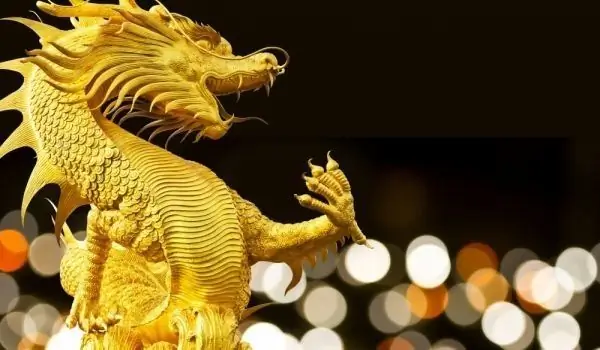2025 Author: Jasmine Walkman | [email protected]. Last modified: 2025-01-23 10:18
Saint Basil the Great was archbishop of Caesarea Cappadocia. He lived during the reign of Emperor Constantine the Great and ruled the church for 15 years.
The holiday Survaki in the past it was celebrated everywhere. Its rites and customs are preserved today, being associated with the celebration of the New Year.
On December 31, before the New Year, a second incense dinner was held after Christmas Eve. But the customs and rituals are different from those associated with welcoming Christmas Eve. To welcome the New Year's holiday, blissful dishes are made, not lean.
The cake (pie with a coin), pie and pork dishes must be arranged on the table. The bread is kneaded by the mistress of the house and silver steam is placed in it. After kneading the bread before washing her hands from the dough, she goes out into the yard and touches a fruit tree with her hands - to bear much fruit; hive - so that the bees are fertile and give more honey.
The pie, also called a mill, is also prepared by the housewife. Between the dough sheets she places dogwood twigs with buds, calling in advance - For God, For the house, For health, For money, For cattle, For the vineyard, etc. Boil a pork head together with the legs with only salt, garlic and flour and place it on the table in the form of a patch.
There is a belief that feathered birds bring luck and happiness and that is why in some areas it is obligatory to prepare dishes from roosters, dishes with chicken and others. Along with these dishes, onions, honey, walnuts, wheat, pork sarmi with rice, fried or roasted pork are placed on the table.
After arranging the table with the dishes, it is smoked by the oldest man in the house, the other rooms, buildings and cattle are smoked, and then the pie is broken into as many pieces as there are names. Whoever gets the steam will be the luckiest of the year. The folk custom dictates that the steam be then bought from the owner and he puts it in his purse. In other areas it is carried to the church, and others tie it with red thread to the pot with which they drink wine to make the year healthy and fertile.
Dinner begins with eating, drinking, telling funny stories and waiting for the New Year. Survakane is done when the first roosters sing and is the second part of the incense night.
Survakars are only boys from the youngest to 15-16 years old. They carry budding dogwood sticks, which are decorated with popcorn, white and red wool and cookies and dried fruits - whey.
Survakars survakat and bless the hosts, and they give them cookies, dried fruit and money. Every New Year's boy first survaka his parents and then goes to survaka relatives, friends and neighbors.
The dishes on the table should be blissful, and some prefer the patch of legs and head of the Christmas pig. The ritual menu should contain a pie with good luck from dogwood twigs called health, pets, house and wealth or a pie with steam, a rooster, a chicken or a turkey, honey, wheat, walnuts and oshav.
Recommended:
Ideas For New Year's Cocktails

New Year's Eve is festive - everyone is dressed especially for her, there are also special dishes on the table, the mood is uplifted. In addition to the festive atmosphere, New Year's Eve can be celebrated with homemade festive cocktails. The first of the cocktails we want to present to you is called Midnight Martini and you will need 100 ml of vodka and 10 ml of coffee liqueur.
What Should Be On The New Year's Table?

There is nothing better than tradition - it gives us a look back at the past and a support for the future. We can find traditions in everything, but we do not always manage to fulfill them due to lack of time or because we are not familiar enough with them.
Turn The New Year's Table Into A Culinary Masterpiece

Turn New Year's table in an unusual mix of culinary masterpieces collected from around the world. In different countries around the world have traditional dishes that are prepare for the New Year . Surprise your loved ones with them and the holiday will be truly extraordinary.
New Year's Dragon For The New Year

For the guests who will celebrate the New Year of the Dragon with you, prepare a special surprise - an original hors d'oeuvre, which is in the shape of a Dragon. The basis for this hors d'oeuvre are hard-boiled eggs. You need seven hard-boiled eggs, parsley or dill to taste, salt, ten tablespoons of mayonnaise.
Culinary Traditions In New Zealand

When you find yourself in New Zealand, you will make sure that the country has one of the most delicious cuisines in the world. Inspired by European, Polynesian and Asian cuisine, it will surprise you with its rich palette of fresh fish and plenty of seafood.

